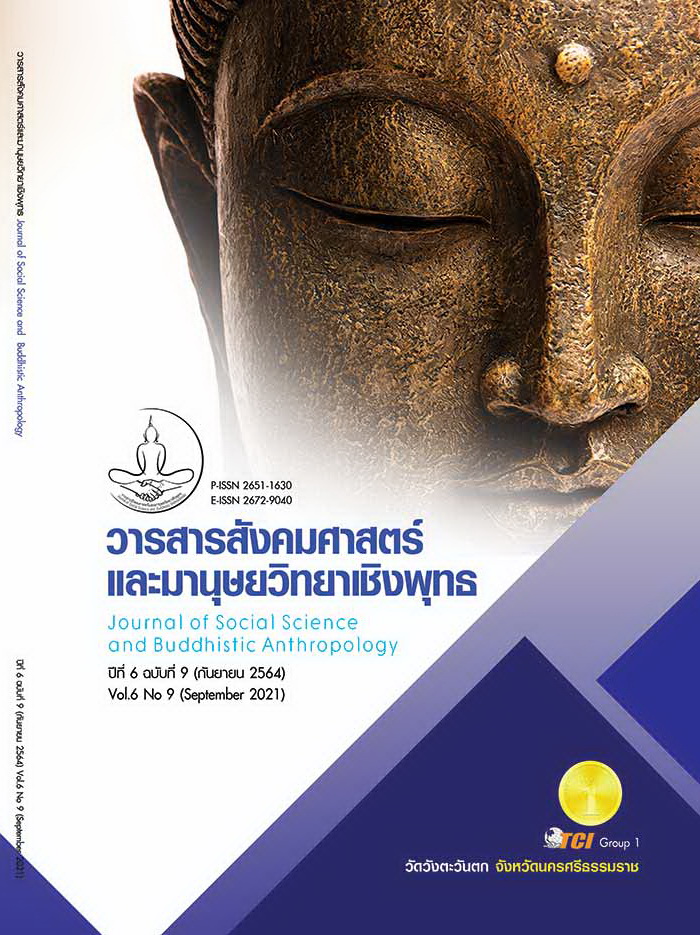A MANAGEMENT PATTERN AFTER MAIZE HARVESTING, USING A VALUE CHAIN MODEL IN THE NORTHERN PART OF THAILAND
Keywords:
Model, Management Model, Value Chain, MaizeAbstract
The objectives of this research article were 1) to study the factors of production strategy, marketing strategy and management strategies influencing the value chain of maize husk and husk management. 2) to study the influence of factors on production strategy, marketing strategy, management strategy and the value chain towards the performance of post-harvest value additions of maize using the value chain in Thailand and 3) to create a post-harvest value chain management model in the northern area of Thailand using a blended research method during the quantitative research the topographic sampling among 400 maize farmers in Thailand was used to analyze the structural equation model to create a model and using structural relationship analysis and qualitative use specific groups of key contributors nine leaders of maize growers in the major cultivating provinces conducted interviews to confirm the quantitative results of the model. The results of the study revealed that 1) production strategy, personnel development planning for production and the implementation of personnel development for production are at the highest level. Marketing strategy the price is at the highest level. Management strategy people at the highest level. 2) production strategy, marketing strategy and management strategy have a direct impact on the value chain of maize husk and stalk management in Thailand and indirectly affect the performance of post-harvest value additions of maize using the value chain and 3) the model was consistent with empirical data
References
ฐานข้อมูลเกษตรกรกลาง. (2562). ข้อมูลจำนวนครัวเรือนที่ปลูกข้าวโพดเลี้ยงสัตว์ ปี 2562. เรียกใช้เมื่อ 7 พฤษภาคม 2564 จาก http://farmerone. org:9502/analytics/saw.dll?Portal&PortalPath =%2Fshared%2FFarmerOne%2Fmain_corn&NQUser=big13&NQPassword=bigdata13
ไทยโพส. (2558). ตัดวัฏจักรหมอกควันภาคเหนือ. เรียกใช้เมื่อ 3 กรกฏาคม 2562 จาก http://www.risk com thai.org/en/news/newspaper-detail. php?id =30538&pcid=71&pcpage=962
ศูนย์วิจัยกสิกรไทย. (2559). ราคาสินค้าเกษตรบางตัวที่ดีขึ้น หนุนรายได้เกษตรกรปี’60 เป็นบวก 2 ปีติดต่อกัน (กระแสทรรศน์ ฉบับที่ 2806). เรียกใช้เมื่อ 17 มิถุนายน 2559 จาก https://www.kasikornresearch.com/th/analysis/k-econ/business/Pages/36030.aspx
สำนักงานพัฒนาการวิจัยการเกษตร. (2559). ข้าวโพดเลี้ยงสัตว์ ถั่วเหลือง ถั่วเขียว และถั่วลิสง ทิศทางพืชเศรษฐกิจไทยในอาเซียน. กรุงเทพมหานคร: บริษัท พรทรัพย์การพิมพ์ จำกัด.
สำนักงานเศรษฐกิจการเกษตร. (2562). ตารางแสดงรายละเอียดข้าวโพดเลี้ยงสัตว์. เรียกใช้เมื่อ 25 เมษายน 2562 จาก http://www.oae.go.th/view/1/ตารางแสดงรายละเอียดข้าวโพดเลี้ยงสัตว์/TH-TH
สำนักงานสถิติแห่งชาติ. (2558). หนี้สินของครัวเรือนเกษตร พ.ศ. 2558. เรียกใช้เมื่อ 7 สิงหาคม 2562 จาก http://service.nso.go.th/nso/nsopublish/pubs/e-book/House_ debt_2558/files/assets/common/downloads/publication.pdf
สิทธิเดช พงศ์กิจวรสิน. (2558). ข้าวโพดเลี้ยงสัตว์กับการสูญเสียพื้นป่า : ปัญหาและทางออก. กรุงเทพมหานคร: สถาบันคลังสมองของชาติ สำนักงานกองทุนสนับสนุนการวิจัย.
Blokland & Santema. (2016). Value chain innovation processes and the influence of co-innovation. Retrieved February 10 , 2019, from https://www.researchgate.net/publication/27347311_ Value_chain_ innovation_processes_and_the_influence_of_co-innovation
Calatayud, A. & Ketterer, J. A. (2016). Integrated Value Chain Risk Management.Retrieved February 7 , 2021, from https://publications. iadb.org/publications/english/document/Integrated-Value-Chain-Risk-Management.pdf
Daniel, C. O. (2018). Effects of Marketing Strategies on Organizational Performance. International Journal of Business Marketing and Management (IJBMM), 3(9), 01-09.
Day, G. (2002). Winning the competition for customer relationships. In Working paper, WhartonSchool of Business. University of Pennsylvania.
Harrison, K. (2018). What Is Value Chain Analysis? Retrieved February 7, 2021, from https://www.businessnewsdaily.com/5678-value-chain-analysis.html
Khatun, R. et al. (2016). Value Chain Analysis of Processed Poultry Products (Egg and Meat) in Some Selected Areas of Bangladesh. American Journal of Rural Development, 4(3), 65-70.
Maziti, L. et al. (2018). The relationship between strategic leadership, innovation performance and competitive advantage amongst a sample of small businesses in South Africa. Journal of Contemporary Management, 15(1), 368-394.
Moller, C. (2015). Business Process Innovation as an Enabler of Proactive Value Chains. Retrieved February 7 , 2021, from https://link.springer.com/chapter /10.1007%2F978-3-319-14430-6_2
Porter, M. E. (1985). Competitive Advantage: Creating and Sustaining Superior Performance. New York: Free Press.
Suphatranon, S. et al. (2018). Value chain costing capability and firm performance: an empirical investigation of electronic and electrical appliance business in Thailand. Journal of Humanities and Social Sciences Thonburi University, 12(29), 30-42.
Von Bertalanffy, L. (1968). General system theory. New York: George Braziller.
Yamane, T. (1973). Statistics: An Introductory Analysis. New york: Harper and Row Publication.
Zhang, Y. et al. (2019). The Influence of Management Innovation and Technological Innovation on Organization Performance. A Mediating Role of Sustainability. Sustainability, 11(2), 1-21.








